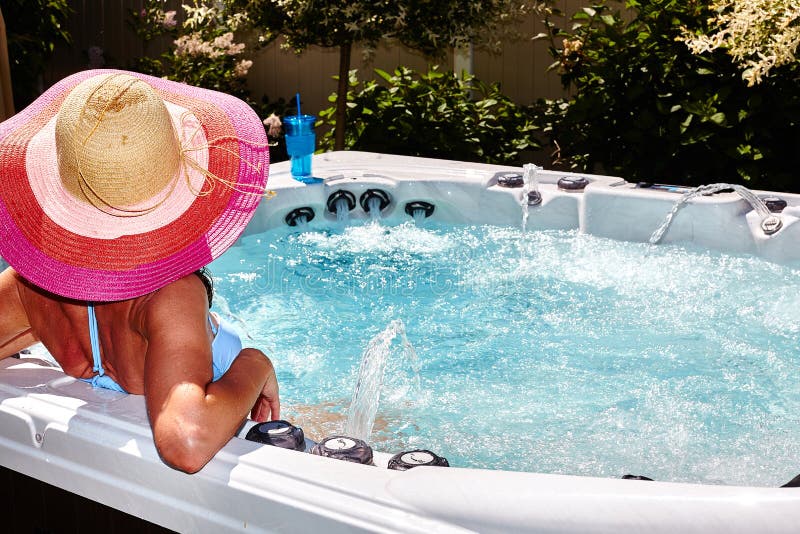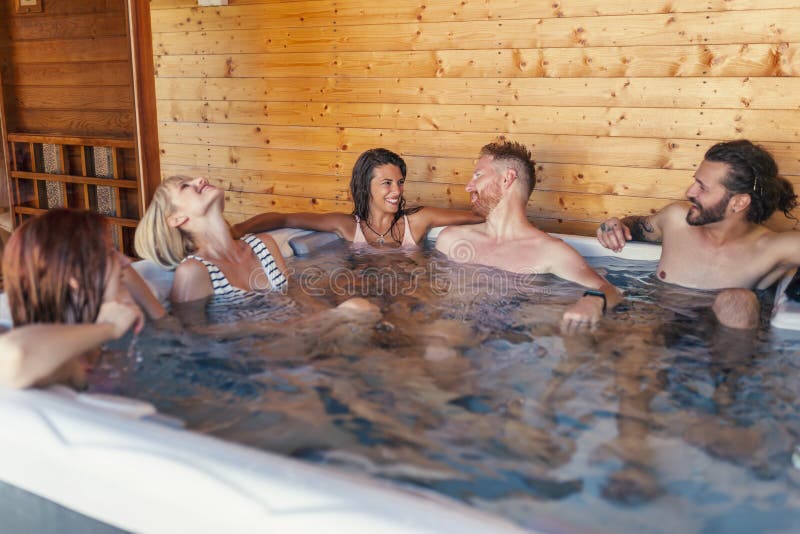==================
A Caveat and Affiliates
First off, a little caveat: within my articles you will find affiliate links, meaning if you buy them, I get a small commission. Your cost is not affected. In addition, I am an Amazon Associate and I earn from qualifying purchases on Amazon.
And yes, if I say that I recommend a product here, it means I truly believe it is a good product. I refuse to recommend any product that I have not researched and believe to be a good value.
Even better, I provide you with a very clear picture of the product, it’s use, and the probable value.
Earning your trust is important to me. I run this website myself and the commissions and donations help support the site.
Sound reasonable and fair enough? Let’s continue to the article.
==================
Hot Tub Care and Maintenance
Hot tubs and spas provide an ideal way for unwinding after a long day or spending quality time with your loved ones. Moreover, hot tub use can link to various health effects, including pain reduction, arthritis relief, and improved blood flow. Adults of all ages love the benefits of having a pool, but it, like anything else, necessitates routine cleaning such as water balancing and chemical additions. In the meantime, a hot tub is such a small body of water; issues will occur even more often than a pool. So, in this article, we will look for some ways for hot tub care and maintenance.

Benefits of Hot Tub
Stress Relief
One of the most noticeable advantages of a hot tub is the ability to help relieve stress. Warm water’s calming effect and massaging action can help to alleviate physical, emotional, and mental stress.
Relax Muscle
The hot water and massaging motion of the hot tub jets will help calm and soothe sore muscles. It will aid in the relief of aches and pains. Before exercise, soak in a hot tub to reduce the chance of injuries.
How to Maintain Hot Tub or Spa?
1. Stick to a Simple Schedule
First on our list of hot tub maintenance is Scum. It can form in indoor and outdoor hot tubs, so if yours is outside, take care of particles like weeds, windblown garbage, and the occasional stray critter. For a clean hot tub and to avoid possible water problems, keep the waterline and seats free. Routine cleaning of your spa’s shell and jets with a sponge and some white vinegar will keep things tidy.
2. Water Balance in Spas
One of the most crucial parts you will do is maintain your spa’s hygiene and water balance. It’s essential to keep all facets of your spa’s water in their proper ranges, just like it is in a lake. It is crucial since four people in a spa are the equivalent of 250 people in a typical swimming pool.
Because of the high temperatures and small scale, more soaps, deodorants, perfumes, oils, and actual perspiration from bathers can leave behind. Moreover, it will result in an overabundance of environmental chemicals that can only remove using spa-specific materials.
3. Proper Cleaning
Clean, steamy, and welcoming hot tubs are ideal. However, if you don’t look after them, they will quickly become a breeding ground for bacteria and algae. The most vital thing you will do to ensure that your hot tub is still ready to use is to monitor the chemicals regularly.
Check the pH, sanitizer, alkalinity, and calcium hardness levels at least twice a week to ensure they’re all within acceptable limits. It’s vital to know what to use for these tests because you’ll always have to add a little to match the chemistry.
Types of Chemicals Used
Chlorine and bromine are the two sanitizers often used in hot tubs. Both are good at sanitizing daily. However, chlorine degrades more quickly at higher temperatures. It has the potential to emit a heavy odor. Bromine is gentler on the skin and is most effective at elevated temperatures. It also retains its effectiveness following disinfection.
Furthermore, it has a more stable pH and is simpler to manage. Bromine is the most popular way for spa owners to sanitize their facilities for these purposes. More is not always better, regardless of the sanitizer you use. However, excessive use of any of these chemicals can cause corrosion issues in machinery.
Advantages of Chlorine:
- It’s a budget-friendly choice.
- In addition, it’s easy to set up and maintain.
- Also, it’s a powerful antibacterial and ant algae agent.
Advantages of Bromine:
- Since it has a lower pH than chlorine, keeping the water regulated is a bit simpler.
- It has a longer lifespan.
- It is kinder to the eyes.
4. Shock Your Hot Tub
To keep your spa in complete working order, shock it after each use or at least once a week, whichever comes first. It is because spas are highly concentrated. However, a limited amount of toxins may have a significant impact. Spas, unlike pools, use a non-chlorine shock or oxidizer, such as Solos Chlorine-Free Oxidizer, to remove odors and avoid annoying pollutants. Non-chlorine shocks almost as quickly break down in warm water as liquid chlorine in a tub.
Why is Shock Important?
Anyone who shocks their hot tub does so mainly to disinfect the pool, but it also aids in clearing cloudy water. There are a variety of other excuses to shock the hot tub, including:
1. Remove Containments
Shocking aids in the removal of organic compounds that bathers apply to the water. As several people use the hot tub simultaneously, organic pollutants can build up to levels that regular sanitizers can’t handle.
2. Kill Bacteria
Shock therapies based on chlorine can use to sanitize hot tub water to make it comfortable for bathers.
3. Reactivation
When the sanitizer (bromine or chlorine) binds to multiple chemicals, a shock solution breaks the bonds, allowing the contaminants to be trapped in the filtration device and release chlorine to begin destroying bacteria.
Do You Need to Wait?
After a shock treatment, you don’t have to wait a certain amount of time and then use your hot tub. However, you can monitor the water to ensure the chlorine levels are secure. Suggestions vary in duration, ranging from 18 minutes to 24 hours. Since the soap does not sanitize when using a non-chlorine shock solution, you should usually use the hot tub 20 minutes after applying it to the bath.
4. Cover your Hot Tub
Using a hot tub shield can help keep stuff out that can stain the bath, whether your spa is outdoors and vulnerable to leaves and bugs or indoors and opened to dust and perhaps a too-curious puppy. It all leads to less effort and fewer additives, which means less money spending on hot tub maintenance. Get a cover if you don’t already have one.
5. Drain your Hot Tub
Draining the tub is the last option whenever it comes to keeping it clean. It is, however, a standard requirement for standalone spas. Since repeated use, chemical by-products and other toxins accumulate rapidly in spa water. The water is more difficult to control as a result of this. The size and number of bathers influence how much you empty your hot tub. Drain it once a month if heavily used.
Remember that your service plan requires valet service. Your dealer can empty and clean your hot tub daily for you. Therefore it allows you to enjoy all of the perks of your spa without having to raise a finger.
6. Clean Empty Spa
Once the water drains out, you can quickly check and clean the shell’s interior and uninstall and clean the spa filters before recharging it. Fortunately, the exterior of your spa can avoid dirt and stains, and cleaning it is as simple as wiping it down with a smooth, damp towel. Many household cleaners may be toxic to your shell, so read the owner’s manual first. When you finish cleaning, give the surface a good rinse with clean water.
7. Hot Tub Water Testing
Spa water monitoring is the one hot tub repair job you’ll do more than any other over the life of your hot tub. It can be, at the very least. Testing the water is the best way to determine whether it has toxins or chemical levels. As a result, test strips for hot tubs are your best friends.
Useful Tips
It’s not as difficult as you would imagine, particularly with so many testing options at your disposal:
- For quick and fast results, use spa test strips.
- In order for more accurate results, use a liquid test pack.
- Also, for the most detailed and precise information, take a water sample to the nearest spa supplier or pool shop.
- Whatever system you use, the most important thing is to take the water sample accurately.
Hot Tub Safety Rules
- Before using any hot tub chemical, read the label carefully and follow the guidelines.
- Never mix hot tub chemicals until a hot tub expert tells you to.
- Chemicals should only add to liquids, not the other way around.
- Never apply chemicals to the Hot Tub water when it is in operation. Just use Hot Tub chemicals in well-ventilated environments.
- When using powdered chemicals, be careful of heavy winds.
- Always keep all hot tub additives out of the control of children and animals.
- Since using hot tub cleaners, make sure to wash your face.
- Every day, check the temperature in your hot tub.
- Heat and moisture should keep away from hot tub chemicals.
- Keep the hot tub turned on at all times.
Conclusion
Regularly bathing in a hot tub may provide various health effects, including muscle relaxation, pain relief, and more sleep. Few findings show that hot tub therapy has a broader range of health effects, but further testing is required to pinpoint the specifics of hot tub therapy for individual conditions. To ensure health and safety, hot tub care and maintenance are essential.
Read More:

